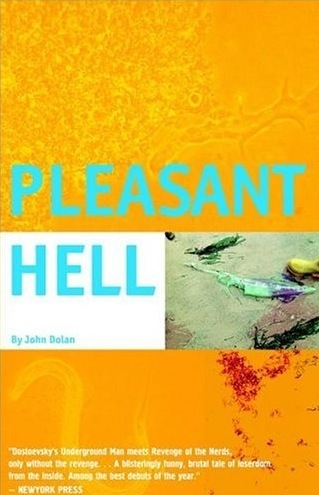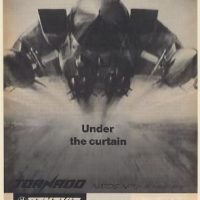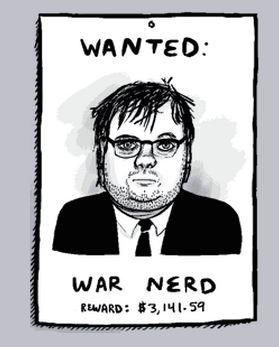
This article was first published on Alternet.org
A group of water oligarchs in California have engineered a disastrous deregulation and privatization scheme. And they’ve pulled in hundreds of millions of taxpayer dollars without any real public outrage. The amount of power and control they wield over California’s most precious resource, water, should shock and frighten us — and it would, if more people were aware of it. But here is the scary thing: They are plotting to gain an even larger share of California’s increasingly-scarce, over-tapped water supply, which will surely lead to shortages, higher prices and untold destruction to California’s environment.
California is in year three of a fairly nasty dry spell. And some very powerful forces are not letting this mini-crisis go to waste, fiercely lobbying Governor Schwarzenegger and Senator Dianne Feinstein, paying off corporate shills like Fox News’ Sean Hannity and capitalizing on people’s fear of drought to push a massive waterworks project that will pump more water, build more dams and keep sucking the state’s rivers dry. The fearmongering schtick goes like this: California is on the brink of a water crisis of cataclysmic proportions, with a life-or-death struggle just around the corner, pitting small farmers who want to save their livelihood against big city elitists who care more about the environment than they do about American jobs. But in reality, this drought hysteria is nothing more than political theatrics, a scare tactic backed by big agribusiness to strong-arm California voters into building a multi-billion dollar system of dams and canals that would not really help small farmers — of which there are very few anyway — but would deliver more water to corporations, subsidize their landholdings, fuel real estate development and enable large-scale water privatization. At its core, it is a war waged for water by California’s megarich on everyone else.
The leader of these recent water privatization efforts in California is a Beverly Hills billionaire named Stewart Resnick. Stewart and his wife, Lynda Resnick, own Roll International Corporation, a private umbrella company that controls the flowers-by-wire company Teleflora, Fiji Water, Pom Wonderful, pesticide manufacturer Suterra and Paramount Agribusiness, the largest farming company in America and the largest pistachio and almond producer in the world. Roll Corp. was ranked #246 on Forbes’ list of America’s largest private companies in 2008 and had an estimated revenue of $1.98 billion in 2007.
They are a limousine liberal power couple. Hyperactive in politics, business and philanthropy, the two raise huge amounts of cash for the Democratic party, donate to the arts, support education and hobnob with influential progressives like Arianna Huffington and the anti-global warming activist and producer of An Inconvenient Truth, Laurie David. Stewart Resnick gave over $350,000 to the Gray Davis campaign and various anti-recall groups between 2000 and 2003, a favor Governor Davis returned by appointing Resnick to co-chair his agriculture-water transition team. A shrewd businesswoman, Lynda is credited with single-handedly creating the pomegranate health fad to sell her Pom Wonderful and catapulted Fiji Water to its recent success, one that environmentalists love to hate, as was recently documented in Mother Jones by Anna Lenzer.
But there is a gaping hole in most accounts of the jet-set Baby Boomer couple: their company, Roll International, is one of the largest, if not the largest, private water brokers in America. Through a series of subsidiary companies and organizations, Roll International is able to convert California’s water from a public, shared resource into a private asset that can be sold on the market to the highest bidder.
It all comes down to Stewart Resnick’s involvement in the creation of a powerful but little-known entity called the Kern County Water Bank — an underground water storage facility at the center of a plan to bring deregulation to California’s most important public utility: water.
According to a 2003 Public Citizen report titled “Water Heist,” the Kern County Water Bank is an underground reservoir in the hottest, driest, southernmost edge of the Central Valley with a capacity of 1 million acre-feet, enough to convert the entire state of Rhode Island into a swampland one-foot deep or supply the City of Los Angeles with water for 1.7 years. The water bank was envisioned in the late ’80s by the Department of Water Resources as a safeguard against prolonged drought. During wet years, it would serve as a repository for excess water coming in from Northern California and the Sierras, and pumped out in dry years. California spent nearly a hundred million dollars to develop the underground reservoir and connect it to the state’s public canals and aqueducts, but in 1995, California’s Department of Water Resources suddenly, and without any public debate, transferred it to a handful of corporate interests.
Here is how Los Angeles Times writer Mark Arax described it in 2003:
The story of how the state’s largest water bank — jump-started with $74 million in taxpayer money — ended up as an integral piece of the private empire of Stewart Resnick begins with a lawsuit, or at least the threat of it.
A seven-year drought ending in the early 1990s pitted Southern California water contractors, such as the Metropolitan Water District, against agricultural contractors, such as the Kern County Water Agency. Each region made its case to the state, telling why it deserved to receive the water guaranteed by long-standing contracts. In the drought’s worst years, urban users got 30% of the draw, while Kern farmers received less than 5%.
In 1994, agricultural and urban interests threatened to sue the state for nondelivery. The main parties gathered in a closed-door meeting in Monterey to hash out a settlement. Public interest groups, environmentalists and smaller water contractors — locked out of the meeting — cried foul.
When it was over, the very flow of California water had been redirected.
Redirected, as in “privatized.”
The details of the transfer are complicated and opaque, but, put simply, the State of California transformed a small number of corporate farmers into a de facto water oligarchy by signing over a massive water holding facility and the many billions of gallons of government-subsidized water that it could store. Arcane and trivial as it may seem, the transfer of the water bank circumvented the usual resale restrictions placed on subsidized water purchased from the state. After the water enters the Kern County Water Bank, it stops being a public resource that could otherwise be used to irrigate crops locally or sold on the free-market to the highest bidder. The transfer privatized water without actually needing to do so explicitly.
But the secretive crew that met in Monterey did more than just privatize one underground water reservoir. California’s water oligarchy hammered out a plan that put them at the controls of the state’s water market and gave them the ability to create non-existent water out of thin air.
The Monterey Amendments, as the revisions that emerged from the closed meetings came to be called, established a legal framework that, for the first time in history, made unregulated water commerce in California possible by creating the concept of “paper water,” which could be traded, transferred, divvied up and put on the books as easily as money in the bank or collateral on a loan without anyone having to transfer a drop. It proved to be a blessing for land speculators during the housing boom that was just around the corner.
Every large real estate development in California has to prove that a secure water source will be available for the project decades into the future. It was a requirement that, until “paper water” came along, posed a serious hurdle to developers building low-income suburban paradises in the Southern California desert. Water is not a easy resource to come by in the West. Underground sources are being depleted at a record pace and the state’s aqueduct system, which pumps rainwater and snow that melts hundreds of miles south, does not have the capacity to support both exponentially growing sprawl and massive farming operations out in the desert. Even if there were an abundance of virgin rivers to dam and redirect, the hundreds of millions of dollars such projects would cost would eat into the fat profit margins of real estate developers and bring suburban sprawl expansion to a crawl. The “paper water” market banished this pesky problem once and for all. From the mid-90s on, real estate developers could satisfy all their hydration needs by shopping for “paper water,” meaning that they were able to satisfy planning regulations simply by convincing a city or county to purchase virtual water rights. They weren’t securing a real water supply, or even transferring a single ounce. But it didn’t matter as long as the water was on their books.
Most urban dwellers would not be happy with the water even if it did arrive. Because private water storage facilities are not subject to public oversight, “paper water” merchants are not required to adhere to basic water quality requirements, or even to test it. Reports of polluted water being pumped out of private banks and contaminating clean water flowing in the aqueduct are rare only because no one cares to look. In 2008, water pumped out by one of the stakeholders in the Kern bank, Semitropic, had arsenic levels six times higher than federal EPA limits, which caused a plume of arsenic-tainted water to flow south down the state aqueduct towards Los Angeles County and surrounding districts, according to the Antelope Valley Press.
But development-crazed Southern California does not seem to care, and neither do the water merchants. Real estate development needed “paper water” as a person in a vegetative state needs their IV drip.
And so, with no warning and negligible media attention, the Monterey Agreements created the strange, new and unregulated “paper water” market, not unlike mortgage-backed securities and other exotic debt instruments dreamed up by Wall Street, if only because the “paper water” market trades in pure fantasy and is built on deception. For decades, California’s water authorities have been in denial about the amount of water they can deliver to their customers. Contractually, the state is obligated to deliver 4 million acre-feet a year. (Los Angeles uses roughly 600,000 acre-feet a year). But in reality, the state can only deliver half the water it promises. Which means that half of the “paper water” being traded on the open market simply does not exist, and never has. And everyone who deals in water knows it, too. Naturally, this posed a problem. Why would anyone buy water that didn’t exist?
The Monterey Amendments got around this problem by making a few legal alterations that made the state explicitly accountable for its original water contracts, regardless of whether there was water or not. This gave buyers the confidence to fuel real estate developments with non-existent water because the government was contractually obligated to bail them out, rain or shine. Where will the state get that water? Well, it could take it away from small farmers, rural communities and anyone else who is poor and politically unconnected.
California’s newly established “paper water” market was a speculator’s wet dream. It was a scam opportunity too promising for the deregulation con artists at Enron to pass up. A few years after the Monterey Amendments, Enron apparently took a cue from the Kern bank, set up a water division, bought up a huge chunk of land in the Central Valley that sat atop a natural underground reservoir and started working on a water bank of their own. But Enron’s snake oil brain trust was scheming on a bigger, more global level. Still in the grips of the Dot Com Bubble, Enron wanted to spark an Internet-based water trading revolution and launched a site that they hoped would become the etrade.com of H20. Called Azurix, it would function as an “exchange on the Internet for buying, selling, storing and transporting water in the West, hoping to make water a traded commodity much like natural gas or electricity,” the Wall Street Journal wrote in 2000.
An e-water market where people could buy, sell, trade and speculate on water like any other tradeable commodity? It was the kind of delusional that only people in the grips of a speculative boom centered on the limitless possibilities of a technological revolution could believe in. To think that you could wake up in Shanghai, check out a few weather forecasts and purchase a few million gallons of California water, aiming to buy wet and sell dry — a scam built on insane dreams. A few years later, Azurix went belly up.
But while Enron’s futuristic vision of water speculation may have come before its time, a more modest version of the water trade was thriving in the Golden State, and it apparently owed it all to one man: Stewart Resnick.
Public Citizen’s “Water Heist” report uncovered evidence that the Beverly Hills farmer was instrumental in the privatization of the Kern Water Bank. Not surprisingly, Resnick’s Paramount Farms emerged with a majority stake in the venture. In fact, Resnick’s farm empire controls the Kern Water Bank so thoroughly that it is not easy to discern where Paramount ends and the Kern Water Bank begins. The Kern Water Bank Authority, which administers the bank, is located in Paramount’s corporate office building outside of Bakersfield, California.
This has brought in massive profits to owners of the Kern bank at taxpayers’ expense, and frequently involve nothing more than buying water at subsidized rates from the state, then turning around and selling it back to a different government agency for a tidy profit.
Just as the Federal Reserve allows banks to borrow money from taxpayers so they can reap huge profits by lending it right back to the masses at a higher rate, the Kern bank allows a handful of corporate farmers to sell a public resource back to the public at markup. According to Public Citizen, in 2001, the Kern County Water Bank bought subsidized water from the State Water Project at $161 an acre-foot and flipped it back to the state’s Environmental Water Account for $250 an acre-foot, making a cool $6.3 million for its owners — just for having the right friends in the right places.
The Environmental Water Account (EWA) was set up in 2000 by the state of California to protect salmon populations in the Sacramento Delta. In dry periods, when Delta water levels would drop below a critical level and pumping stations would start slurping up too many fish and grinding them into mush, the state would slow down pumping and supplement water deliveries by buying back water from whoever had any to spare. The plan looked good on paper, but it turned into a very expensive and useless failure — but only for us and the fish. For members of the Kern County Water Bank, who raked in nearly $40 million dollars by reselling water to the EWA from 2001 to 2004, it worked out pretty well.
As majority stakeholder, Resnick took the lion’s share of the profits. A recent investigation by the Contra Costa Times revealed that even as its fish populations teetered on the brink of extinction, California pumped “unprecedented amounts of water out of the Delta only to effectively buy some of it back at taxpayers expense.” From 2000 to 2007, California spent $200 million on buying water for the EWA, of which Stewart Resnick’s subsidiary companies skimmed 20 cents of every dollar for a total profit of $40 million in seven years. With such gracious help from taxpayers, it is no wonder the Resnicks were able to build such a successful business empire.
“For a program that was supposed to benefit the environment, it apparently did two things — it didn’t benefit the environment and it appears to have enriched private individuals using public money,” said Jonas Minton, a water policy expert with the Planning and Conservation League, a California environmental advocacy group, as quoted by the Contra Costa Times.
In a 2008 interview with the New Yorker, Stewart Resnick said he initially got into farming in 1978 as a hedge against inflation. Either he was feigning naivete, or he must have quickly realized that he stumbled upon the money-making opportunity of his life, one that helped grow Paramount Farms into an agribusiness empire.
While California’s farming industry was steadily shedding land and farms all through the 90s, the Resnicks were expanding production and acreage, nearly doubling their cultivated land holdings just in the three years after the Monterey Agreements.
But the profiteering off California’s environment-friendly water program by Resnick and the rest of the Kern Water Bank crew is chump change compared to the profits water merchants like him can make by selling paper water to real estate developers in the semi-desert wastelands of Southern California.
Take the deal that went down this summer between a farmer with a stake in the Kern bank and a McTractHome paradise in the Mojave Desert, 100 miles east of Los Angeles. For roughly $73 million, the Mojave Water Agency acquired permanent rights to 14,000 acre-feet of water pumped out of the Sacramento Delta and delivered via the State Aqueduct, enough water to flood an area the size of San Francisco six inches deep or hydrate up to 30,000 families for a whole year.
The farmer selling the water was not really a “farmer” in the poor, homesteading, buck-toothed sense of the word, but a private Bay Area-based company called Sandridge Partners owned by the Vidovich family. In addition to running a lucrative cotton and almond growing operation in the heart of the Central Valley, the Vidoviches also control a small real estate empire in the Silicon Valley, building and managing estate developments: office complexes, condominiums, mobile home parks, hotels and shopping centers.
John Vidovich, the current patriarch of the family business, and his wife Lydia live in an $11.4 million Los Altos Hills home. Hilly, wooded and overlooking the bay just south of San Francisco, it’s one of the ritziest places to live in Northern California and the 8th most expensive zip code in America. (The president of Resnick’s Paramount Farms, Joseph MacIlvane, rubs shoulders with the Vidovich family, sharing a post on the board of directors of the Dudley Ranch Water District, a private water district that owns 9.62% the Kern bank, along with John Vidovich.)
Despite — or maybe because of — the family’s extreme wealth, Sandridge Partners is one of the top welfare queen-farmers in the country. In 2007, it received $1 million in federal farm subsidies, more than any other farmer that year, raking in an additional $6.8 million between 1995 and 2006, according to the Environmental Working Group. Known as “direct payments,” the subsidies are made each year mostly to growers of corn, wheat, rice and cotton, with payout amounts based on past production, sometimes even regardless of whether the crops are still being grown.
But their $73-million water deal shows that farm subsidies aren’t the only, or even the most, lucrative handout that has the Vidoviches living well. The money paid out via farm subsidies pale in comparison to the massive profits that can be reaped from simply reselling the heavily taxpayer subsidized water they receive from the state.
According one state water official, the Vidovich’s $5,200 per acre-foot deal with the Mojave Water Agency was nearly double previous record price paid for water in California.
Just look at these profit margins: these days, Central Valley farmers buy water from California’s Department of Water Resources for a heavily-subsidized $100 to $500 per acre-foot, while city slickers in San Francisco pay around $8,500 for the same water. With this kind of discount, Vidoviches could score a ten- to fifty-fold spread on their purchase-to-sale price. Even if they paid the maximum price of $500 per acre-foot, the water they sold to the Mojave Desert for $73 million would have only cost them $7 million. That’s $66 million in pure profit, and all they have to do is let a couple of hundred acres of almond groves wither and let California taxpayers, their ritzy Los Altos Hills neighbors included, fill up their bank accounts.
Shocking as this textbook example of transfer of wealth is, it is neither an isolated incident nor a freak loophole. It was the intended effect of the deregulation and privatization of water hashed in Monterey almost 15 years ago, which transformed water into a truly liquid asset that could be traded with ease on the market. (In 2002, the Sacramento Bee estimated that members of the Kern County Water Bank made at least $128 million from water sales to other cities and counties, which the paper admitted was an incomplete and low-ball figure.)
“Think of the Bank of America, the way it operates with dollars, that’s the way we operate with water,” said Jonathan Parker, general manager of the Kern Water Bank Authority. “What we do is provide a service. We store water at cost and then take water out of the ground, at cost. They pay us to provide that service in the least expensive manner.”
Parker was quoted in 2003. With all the bank bailouts that happened since then, the money-bank to water-bank analogy works even better. The Kern Water Bank shifts the cost for its water onto taxpayers and shifts all of the profits it makes by selling the water to itself. As it turns out, the money-making ideology of “nationalizing losses, privatizing profits” is no longer limited to Wall Street, and hasn’t been for a long time. It’s all part of the business plan for California’s corporate farmers, and a glimpse into the future of California’s water trade.
This is the backdrop against which the hysterics and fearmongering of California’s water debate are being played out. The drought has been getting increasing political and media attention in recent months. At the core of the discussions are plans for a multi-billion dollar Peripheral Canal, a huge aqueduct that would be constructed to bypass the dying Sacramento Delta and tap into fresh water further upstream with supposedly less harm. It sounds nice on paper. But in reality, the Peripheral Canal is a water privatization con that would move water over to Central Valley water bankers and balloon California’s already over-leveraged “paper water” market.
Governor Schwarzenegger has been trying to push the project through California’s legislature for months, and has received ample support from both sides of the isle. In September, Democratic Senator Dianne Feinstein backed the governor and badgered the Obama administration to step in and help California’s struggling farmers, going as far as including a letter personally written by Stewart Resnick in one of her communiques. In it Resnick went after Obama officials for siding with environmental interests over those “struggling” farmers. That same month, second-rate FOX news anchor Sean Hannity jetted to Fresno to lead an AstroTurf campaign — complete with paid Latino “protesters” and funded by the PR firm Burson-Marsteller, which has done work for a wide range of evil clients, from the tobacco industry to Blackwater to the junta in Argentina — and push for exactly the same thing. Hannity isn’t losing any sleep for backing Resnick’s “liberal” agenda. The Peripheral Canal is backed by powerful corporate interests regardless of party affiliation.
Of course, the profit drive of corporate America is relentless. And we, the people, have short lives and short memories. And that’s the funny thing: this isn’t even a new scam. “The Peripheral Canal had been a top priority of the water interests for forty years,” wrote the late and much admired Marc Reisner in 1986 in his book Cadillac Desert, one of the most eye-opening and sweeping histories of water use in the American West. It was part of Governor Pat Brown’s original master plan for the California Aqueduct, the baby he pushed through in 1960. His son, Jerry Brown tried to finish what his dad started when he took the governor’s seat in the mid-late 70s. But Gov. Brown’s attempt to get it passed collapsed amid a worsening economy and a wet year.
Reisner chronicles the infighting, corruption, fraud and blatant media manipulation of public opinion that took place when corporate interests launched an all-out, yet ultimately unsuccessful, blitz to convince the Californian people that apocalypse would be at hand if the Peripheral Canal was not built 25 years ago.
Now, three decades later California’s legislature is trying to hammer out exactly the same plan, which is as much about opening up more farm land as it is about securing more paper water to fuel suburban sprawl in the desert. And the corporate powers-that-be are using the exact same strategy — fear — to convince California taxpayers to finance their personal wealth.
Would you like to know more? Read Yasha Levine’s “Dr Pepper’s Wet Dream: Water, Government Subsidies and Transfer of Wealth in the Middle of the Desert” and check out Public Citizen’s report, “Water Heist: How Corporations Are Cashing in on California’s Water” by journalist John Gibler.
Yasha Levine is a mobile home inhabitin’ editor of The eXiled. He is currently stationed in Victorville, CA. You can reach him at levine [at] exiledonline.com.
Read more: california, central valley, paper water, peripheral canal, privatization, sean hannity, stewart resnick, water, water banking, wealth transfer, Yasha Levine, Class War For Idiots, Water Wars


Got something to say to us? Then send us a letter.
Want us to stick around? Donate to The eXiled.
Twitter twerps can follow us at twitter.com/exiledonline
















27 Comments
Add your own1. twentyeight | November 19th, 2009 at 12:33 pm
Exterminate the Kulaks
2. who gives a shite | November 19th, 2009 at 2:03 pm
WHO CARES what happens to California??? Fruits, nut and flakes!
3. z | November 19th, 2009 at 2:12 pm
tax’em until they drop!
4. Expat in BY | November 19th, 2009 at 5:51 pm
So if I get this straight, paper water is supposed to turn real water into a near-virtual commodity, ultimately tying up a vital resource for the sake of someone getting rich.
Sounds to me like they found a way around dealing with the problem of decaying infrastructure in America – by hoarding water and playing “money-market” with it, who needs pipes, or for that matter arsenic-free water? I mean who is ever going to drink it? (Of course, that’s also bad news for the civil and environmental engineering job market in California…)
As to Resnick, all I can say is: way to inspire people to embrace resource nationalization. (Or to kill those same people off when they do nothing – it’s hard to say which way Americans will turn when it’s this obvious there is a real gun pointed at their head. Should be interesting to watch… from afar.)
5. Lloyd Carter | November 19th, 2009 at 6:05 pm
Readers who enjoyed this expose of California water politics may also wish to read my law review article on the link between industrial agriculture in California’s San Joaquin Valley and the perpetual poverty in the Valley, which is the poorest place in America. It’s posted at http://www.lloydgcarter.com
Lloyd Carter
6. cult of skaro | November 19th, 2009 at 8:29 pm
“tax’em until they drop!”
“WHO CARES what happens to California??? Fruits, nut and flakes!”
California is the largest state and gets .89 for every dollar it sends to Washington. It subsidizes the rest of the country’s waste and govt programs. If they go completely belly up, we are screwed
7. Tony | November 19th, 2009 at 8:47 pm
Don’t forget that Hillary for President’08 was also one of the evil clients of Burson-Marsteller. Hillz seems to be good friends with its exalted leader Mark Penn.
8. az | November 19th, 2009 at 9:14 pm
“[N]ationalizing losses, privatizing profits” – mmm… but when has that ever not been the case? I mean that’s what is so funny about libertaritards who pretend not to be teabaggers – they have no idea what government will look like in their idea of the US as a political entity but secretly know that it would only work as an “incorruptible” junta-vanguard akin to Stalin’s USSR post-1936.
And yes, I disproportionately focus on making fun of libertarians because the alternative would be actually thinking of solutions to these problems, because, to quote Zizek, “I think, I sometimes, . . . have a strange paranoiac idea that maybe this crisis was manufactured so that people will see that even if there is a crisis, the left really doesn’t have a global answer.”
9. liberalMentald1s0rder | November 19th, 2009 at 9:53 pm
Dude, govt. subsidies IS THE PROBLEM in the first place. Suburban sprawl itself is govt. subsidized and has been for the past 60 years to turn America from a place with forests, streams and mountain ranges as far as the eye can see with fine cities into a giant parking lot with malls and tick-tack paper machey looking homes.
Let the free market do its work. The cities AND the “farmers” (big agri biz) should pay the SAME MARKET PRICE for the water. No govt. intervention on EITHER SIDE and that will level the playing field.
IF there wasn’t any govt. intervention you wouldn’t have one side buying the water for cheap and selling it to the other party for higher prices.
“It subsidizes the rest of the country’s waste and govt programs. If they go completely belly up, we are screwed”
Actually that would mean more freedom for the rest of the country. The welfare queen GOP states would receive less fed govt. funds and would finally have to get up their lazy asses and build their own economies. The blue states would get to keep MORE of their OWN MONEY to spend on themselves instead of the Federal govt. taking it away and redistributing it to the lazy states that have high rates of poverty. Its a win win situation.
Maybe you Californians would keep billions of dollars more to build that rail road connecting Los Angeles to the Bay area. Too bad the lefties tax the sh8t out of everybody.
10. V | November 19th, 2009 at 10:25 pm
Forget it Jake, it’s Chinatown.
11. niknak | November 20th, 2009 at 6:56 am
@9
I agree. Government subsidies are a HUGE part of the problem. Eliminate them and you’ve taken a big chunk of profit out of the hands of the plutocrats.
12. Metallica | November 20th, 2009 at 7:54 am
You fucking liberals, California is literally right next to an ocean full of water.
13. Orion | November 20th, 2009 at 11:04 am
@12
You literally have no idea how many solar panels it takes to power a desalination plant, the costs to save the ecosystem, the sheer amount of time and political will demanded from a state as ADD as California.
14. Necronomic Justice | November 20th, 2009 at 11:06 am
@12 “. . . an ocean full of water.”
Yes, let them eat cake?
15. liberalMentald1s0rder | November 20th, 2009 at 5:01 pm
@ 12
Not to mention its believed the coasts of Cali have up to 10 billion barrels of oil waiting to be tapped. Thats like an ANWAR size deposit But the liberals don’t want to drill for it because it will harm fish or something. If America won’t drill for it, China or Russia will and they won’t care about the enviroment. As a matter of fact they woudl pullute the crap out of our waters. They have no idea how much it will boost the state economy.
Oh well Cali is too populated by liberals. People use to look up to you Californians and wanted to be like you. Now everybody hates you and can’t wait for your downfall.
16. Anonymous | November 21st, 2009 at 12:07 am
“After the water enters the Kern County Water Bank, it stops being a public resource that could otherwise be used to irrigate crops locally or sold on the free-market to the highest bidder.” Wait, what? Was that a typo of some kind?
“the state’s aqueduct system, which pumps rainwater and snow that melts hundreds of miles south,” South or north?
“It was the kind of delusional that only people in the grips of a speculative boom centered on the limitless possibilities of a technological revolution could believe in.” Delusion.
“a private water district that owns 9.62% the Kern bank” 9.62% of the Kern bank.
“mobile home inhabitin’” Wait, what?! Mobile home?! What happened to your McMansion rental?! Please tell us this story!
17. Marla | November 21st, 2009 at 1:41 am
Behind the smokescreen …. secret water diversion. 50 yrs spent rebuilding cities on top of a secretly-replaced water system. Altered records to cover up the evidence. Upon being caught, the City of Fresno reacted with perjury followed by death threats for exposing this. http://www.myspace.com/marlalk4
18. Anonymous | November 21st, 2009 at 3:50 am
http://www.ggu.edu/lawlibrary/environmental_law_journal/eljvol3/attachment/Carter.pdf
This article of Carter’s linked in comment #5 is absolutely spectacular. Selenium poisoned wastelands turned into irrigated farms, operating for fifty years and counting, with no settled way at any point to dispose of the selenium poisoned runoff waste water! Giant corporate farms subsidized by taxpayers and paying less each year in taxes than a busy 7-11 in Fresno! It’s 38 pages, but if you care at all about California water, well worth reading.
19. Necronomic Justice | November 21st, 2009 at 8:22 pm
@15. liberalMentald1s0rder
Are you suggesting that China or Russia will be drilling for oil off of Californian’s coast? Bwahahahahaha.
20. Necronomic Justice | November 25th, 2009 at 9:18 pm
@8, AZ, I just picked up Zizek’s In Defense of Lost Causes. Been meaning to read some of this guy’s stuff for a while now, thanks for reminding me.
21. liberalMentald1s0rder | November 26th, 2009 at 2:05 pm
@ 20 With the economy going down and the possibility of the American oil companies being bought up by other countries AND the liberals wanting to eradicate those evil American oil companies, yes it can happen. You would see China or Russia drilling right off Cali’s coasts yet they would pollute the sh8t out of it (at least American co. do a way better job at being cleaner) and Californians would be left there in the dark not seeing any benefit but the middle states whom hate CA alot would laugh their asses off and not help. 10 billion barrels waiting there which can help the state economy but the liberals are blocking it. Thats like starving to death because of not having a can opener.
22. aleke | November 27th, 2009 at 1:40 pm
@21
Shut the fuck up and go crawl back into the Fox News bunker
23. Obbop | August 27th, 2010 at 9:17 am
“There’s class warfare, all right, Mr. (Warren) Buffett said, but it’s my class, the rich class, that’s making war, and we’re winning.”
24. Gene Beley | January 3rd, 2014 at 11:57 am
When are we going to see more good articles on the Resnicks and Mr. Vidovich? I understand Resnicks are out buying up MORE water banks. And why not? They have found a new industry to add billions more to their coffers. Got to hand it to Stewart Resnick, who was a millionaire before he graduated from UCLA Law School through his starting janitorial companies. I’m an entrepreneur, too, on a much smaller scale, so don’t want to discourage the American dream, but this is over the top pure greed at the public’s expense that will flush the average Californian taxpayer down the toilet—if they have any water left for the toilet to work!
25. Ex-MislTech | February 20th, 2014 at 7:51 am
@19 some foreign nations are drilling near US shores, near florida at present.
http://www.tampabay.com/news/politics/stateroundup/politifact-stearns-claim-about-chinese-oil-drilling-in-gulf-of-mexico-is/1085129
26. Ex-MislTech | February 20th, 2014 at 7:53 am
@22
Good idea, lets supress that free speech and all—
AEC SAYS: GOOD IDEA
27. Charley | June 21st, 2016 at 6:55 am
The untold part of the story is that the “paper water” was a State of California fabrication. The California Water Project was designed to delivering twice the water it actually does. The undelivered water was destined to irrigate farmland in the southern portion of the San Joaquin Valley. That fully developed but un-irrigated farmland borders Interstate 5 as you drive down the Valley, thousands of leveled, ready to farm, dry acres. The owners of that land traded that promised but undelivered water for the water in the Kern Water Bank. To not have made that trade would have been an admission that the California Water Project wasn’t delivering as promised. The State of California fabricated the water, and just got out-negotiated by some very bright people.
Leave a Comment
(Open to all. Comments can and will be censored at whim and without warning.)
Subscribe to the comments via RSS Feed